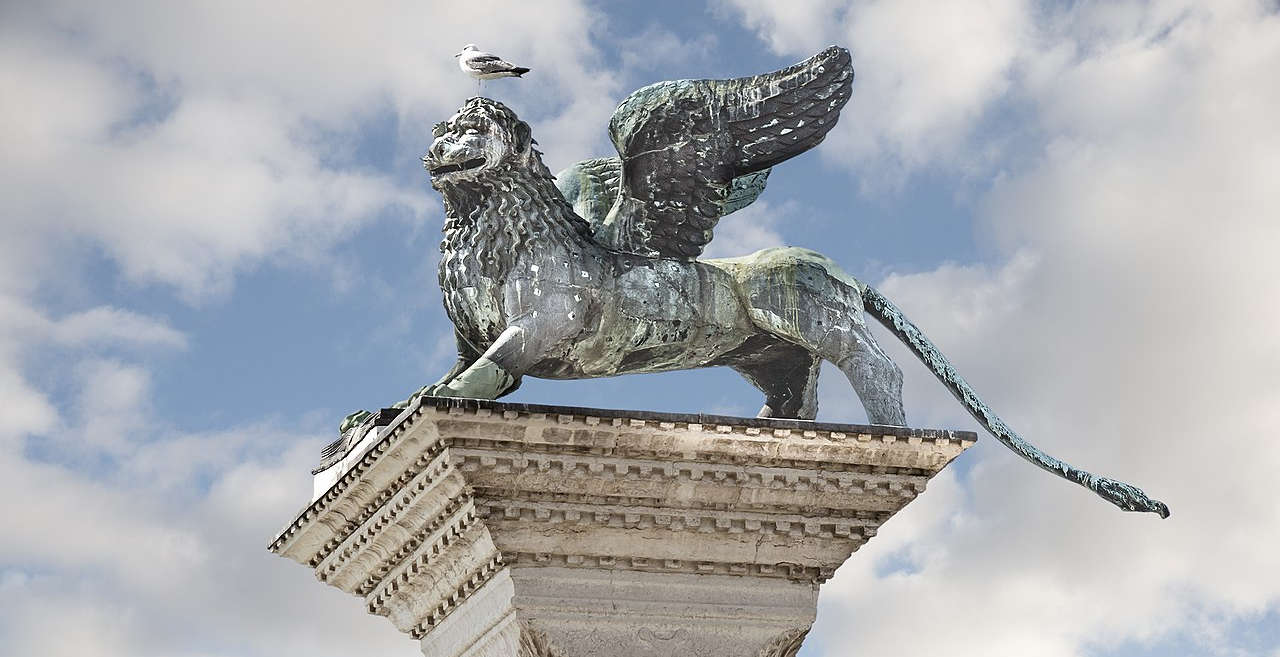The Lion of St. Mark's Square is Made in China: work's Chinese origin confirmed
A team of experts in geology, chemistry, archaeology and art history from theUniversity of Padua and theInternational Association for Mediterranean and Oriental Studies (Ismeo), in collaboration withCa’ Foscari University of Venice, has carried out new chemical analyses on the bronze alloy of the famous sculpture of the Lion of St. Mark, located on one of the granite columns in Piazzetta San Marco. The results reveal that the statue may be a reassembly of a “zhènmùshòu” (镇墓兽 “guardian of tombs”), a Chinese lion made during the Tang Dynasty (609-907 AD) and cast with copper from the mines of the lower Yang-tze River basin, known as the Blue River. In other words: the Lion of St. Mark could be ... made in China!
The investigation used lead isotope analysis, which confirmed that the copper came from Chinese mines through distinctive traces. The discovery was announced during the international conference on Marco Polo, being held in Venice to celebrate 700 years since the death of the traveling merchant (1254-1324).
The statue of the Lion of St. Mark was already present on the column when Marco Polo returned in 1295, but the circumstances of its arrival, probably in pieces, remain mysterious. Scholars speculate that the Lion may have been brought to Venice as part of an assignment from Marco’s father Nicolò and uncle Maffeo, who had visited the Mongol court in Beijing between 1264 and 1266.
What is certain is that the first known record of the Lion of Piazzetta San Marco dates back to 1293. However, it was not installed on the column until after 1172, as this is the date the column was brought to Venice. In 1797 the lion was also requisitioned by Napoleon , who took it to France and installed it in Paris in Place des Invalides. After that, in 1815, it returned to Venice, but on that very occasion it fell, shattered, and had to be restored by sculptor Bartolomeo Ferrari, who made some additions, which are recognizable (for example, the book under the paws, which was remade in lead: the rest of the animal is almost entirely original). Then removed in 1892 for inspection, it was placed back on the column and remained there until 1940, when it was taken away for shelter during World War II.
Scholars have long debated its origin. The hypothesis that it is a medieval Italian work has long ago been discarded, and a wide variety of origins have been hypothesized for the Lion of Piazzetta San Marco: a Hellenistic, Assyrian, or Sassanid work, or even an artifact from India, and there are even those who thought it might be part of an ancient statue depicting a chimera. The idea that it might be Chinese is not new either: provenance from the East has been speculated before. Now then, the new discovery may add a piece of knowledge. It certainly enriches the understanding of trade and cultural contacts along the Silk Road, highlighting the link between Eastern Eurasia and the Adriatic Sea. Although some mysteries remain unsolved, the Lion of St. Mark now tells another piece of the story of trade and influences between Venice and the distant cultures of the East.
Image: the Lion of St. Mark’s Square. Photo: Didier Descouens
 |
| The Lion of St. Mark's Square is Made in China: work's Chinese origin confirmed |
Warning: the translation into English of the original Italian article was created using automatic tools. We undertake to review all articles, but we do not guarantee the total absence of inaccuracies in the translation due to the program. You can find the original by clicking on the ITA button. If you find any mistake,please contact us.




























